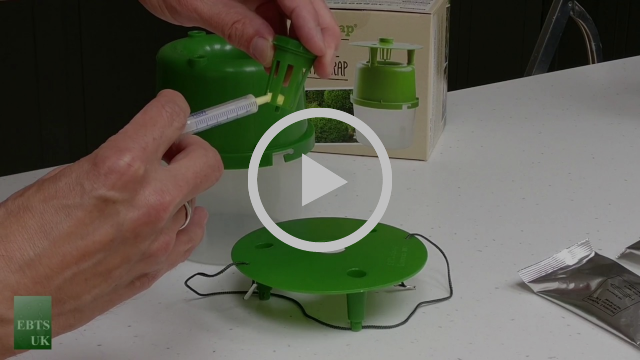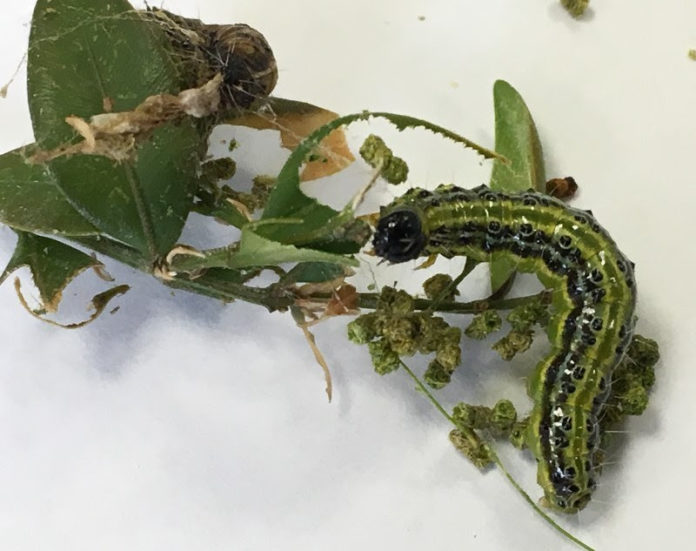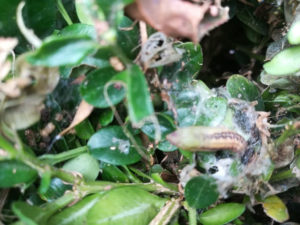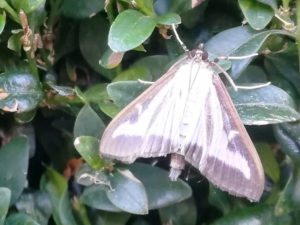Box tree moth newly arrived pest in Ireland
The box tree moth often referred to as just box moth, Cydalima perspectalis, has been seen in Europe since 2007. It was recorded for the first time in Ireland in 2018 (Dublin and Kildare). It is an invasive moth species native to Japan, Korea and China. It can cause extensive damage to all Buxus species. Experience from the UK and continent is of rapid defoliation of plants and death where pest levels are high.
Life cycle
In favourable climates, the pest can have up to four generations per year. Some models are predicting one or two generations per year in Ireland. Only time will tell how accurate these estimates are.
Young caterpillars overwinter in a cocoon built from webbing, constructed between leaves. Caterpillars begin feeding again in spring. They feed on foliage and occasionally stems of Buxus as the caterpillar develops. Large amounts of frass (insect waste) is produced. Once mature, caterpillars form a tight protective tent of foliage and silk and pupate. Female moths lay eggs on the underside of leaves. The natural spread of the moth is between 7 and 10km per year. Moths and eggs do not overwinter.
Monitoring
Begin checking boxwood plants in March for emerging caterpillars. Caterpillar damage is easily recognizable. The insects themselves are distinctive with large black eyes and yellow marking along a green body. Pheromone traps can be used to trap male moths; they do not attract the female egg-laying moths. The traps can be used indoors and outdoors. They should be in place before the adults take to the wing, possibly late April and monitored regularly.
Control
As the moth is not native to Europe, it has few predators, possibly due to the build-up of toxic alkaloids from their host-plant. So far very few parasites of the pest have been found and so it has been readily able to establish, limited only by abiotic factors.
A biological option Bacillus thuringiensis has proven to be effective in controlling the caterpillar.
There are a number of other plant protection products available that are targeted at caterpillars and less harmful to beneficial nontarget insects e.g. Spinosad and Indoxacarb.
The only successful time to control the pest is while the caterpillar is actively feeding. Many of the plant protection products are more effective when combined with a feeding stimulator e.g. sucrose/fructose.
Teagasc Box Tree Moth Technical Bulletin Detailed information, identification, monitoring and control
Teagasc Box Moth Poster Simplified poster format
 EBTS demonstrates the use of pheromone traps for monitoring male moths. Pheromone capsules and water in the trap are more frequently used now.
EBTS demonstrates the use of pheromone traps for monitoring male moths. Pheromone capsules and water in the trap are more frequently used now.











